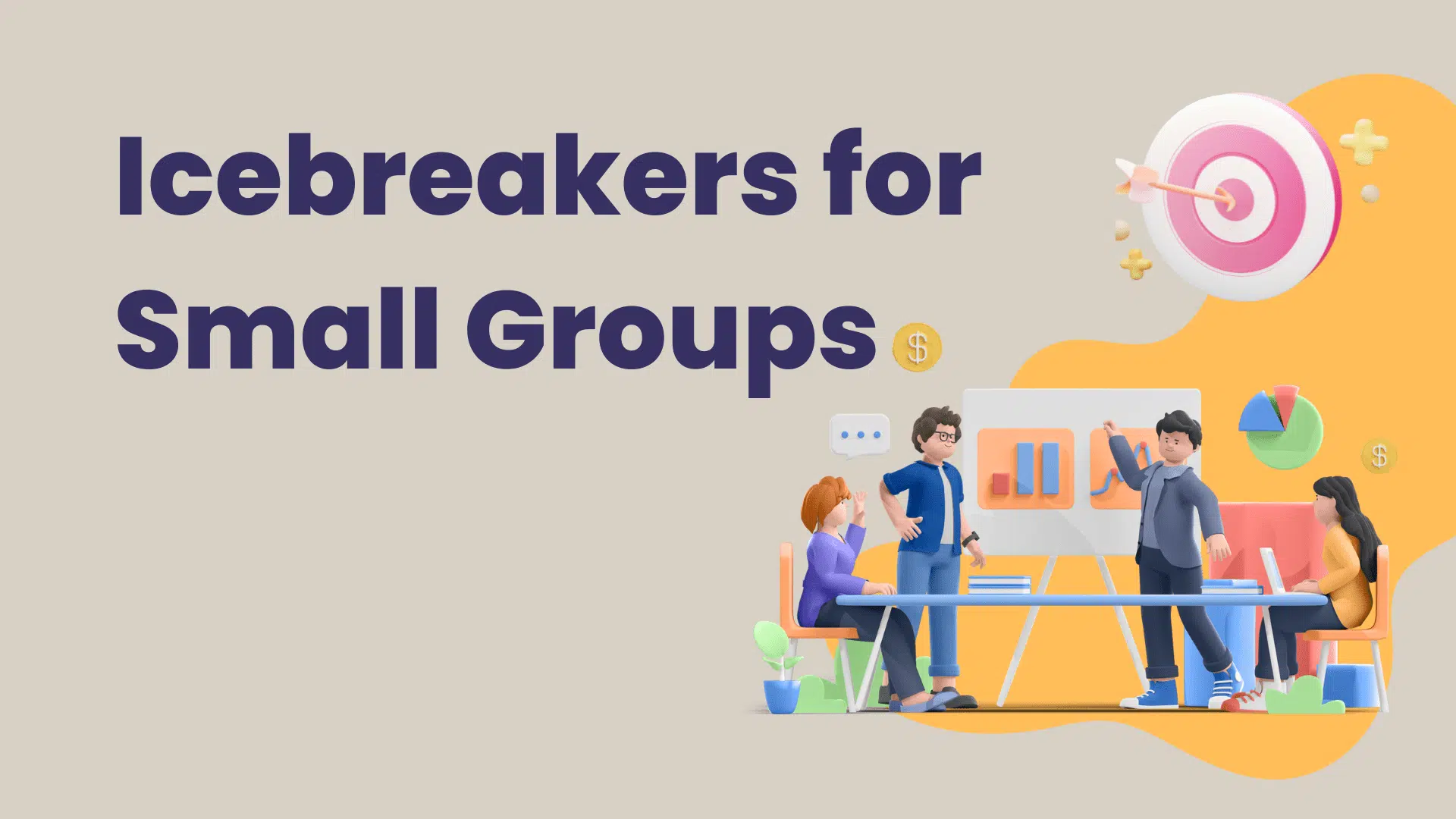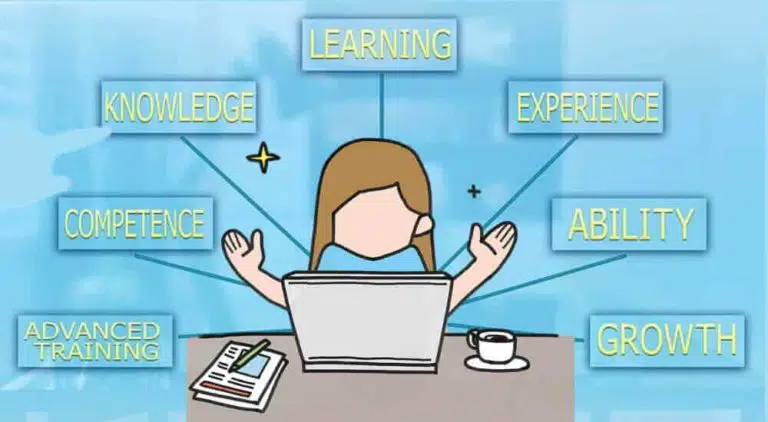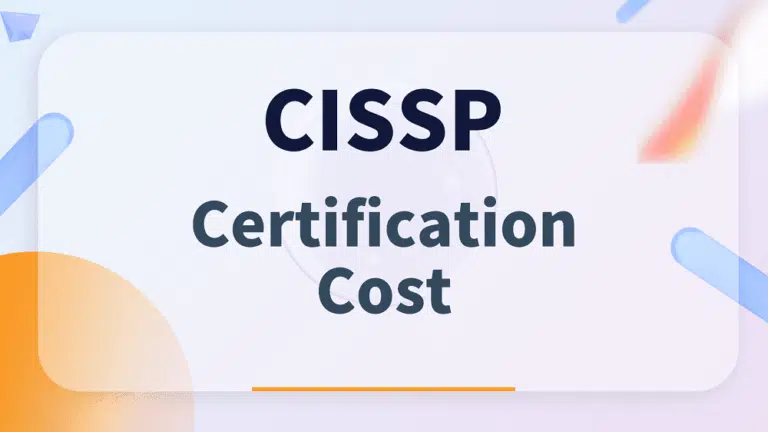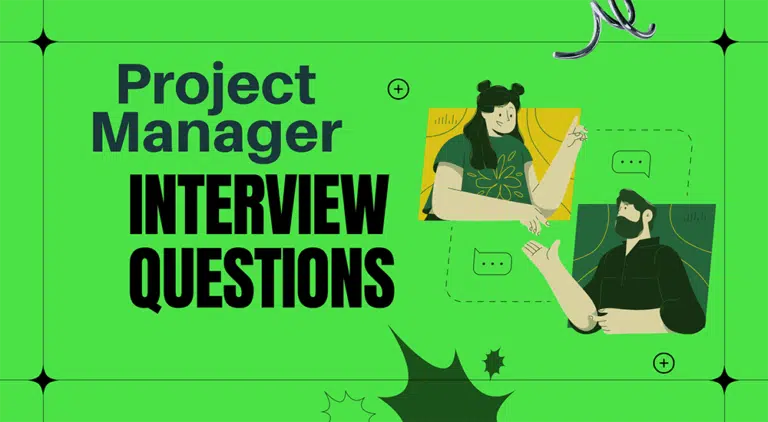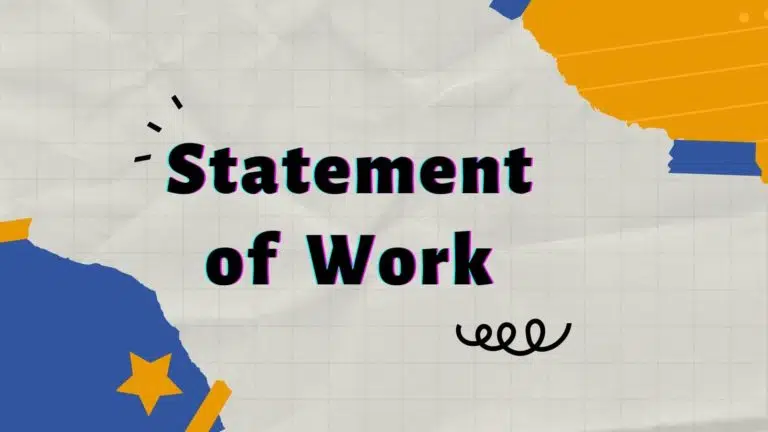Bonding and cohesiveness are vital for team performance, and if you have a small team, you can use icebreakers to help team members bond.
In today’s post, I will provide you with icebreaker ideas for small groups that you can use to energize your team and push them to perform better.
Let’s first understand what the icebreakers are.
What is an Icebreaker?
An icebreaker is a technique that facilitates introductions, builds rapport, and creates a comfortable atmosphere among coworkers, employees, or team members. It breaks down initial barriers in a group and encourages communication and collaboration.
Icebreakers are useful when developing a new team, starting a project, or bringing together individuals who may not know each other well. It creates a positive and inclusive environment that can contribute to better communication and collaboration within the workplace.
Icebreakers can be one of three types:
- Questions: Questions are the simplest icebreakers. You can ask questions anytime to break the ice and start the conversation. “How are you?” is a classic example of an icebreaker question.
- Activities: If you have time, you can use team-building activities to break the ice. With a virtual scavenger hunt, you can make a list of 10 items and ask teammates to find them online quickly.
- Games: Games have a competitive element in which one team or individual wins. Fun games are good icebreakers to energize a stagnant team.
Why Should You Use an Icebreaker?
Using icebreakers is advantageous for long-term team building.
Icebreakers help team members get to know each other. This is necessary for building trust and relationships, which are key ingredients to teamwork. When team members know each other, they feel comfortable sharing ideas, collaborating, and supporting each other.
Icebreakers can help break barriers. When team members first meet, they may feel shy or uncomfortable. Icebreakers can help create a more relaxed, fun atmosphere, thereby making it easier for team members to get to know each other and start building relationships.
Icebreakers motivate team members and increase engagement. Fun and interactive icebreakers can help to get people excited and motivated about working together. This can lead to increased productivity and creativity.
Icebreakers improve communication and collaboration. Icebreakers can help people communicate and collaborate more effectively. For example, some icebreakers require team members to work together to solve a problem or complete a task. This can help team members develop teamwork skills and learn to trust and rely on each other.
11 Icebreaker Questions for Small Groups
Icebreaker questions are known as quick icebreakers as they are quicker to break the ice in a small group. Using questions, you can ask team members to introduce themselves or welcome new members to create team bonding.
You can use the following icebreaker questions to bond with your team:
- How are you? This is a classic icebreaker question that you can ask anyone after greeting them. After their initial response, you can lead the conversion further and help the team member open up and break the ice with you and/or the rest of the team.
- Please explain yourself. This is another great icebreaker question. You can use this icebreaker question for any new team member. This icebreaker will help them introduce themselves and connect with the team.
- What is the most adventurous thing you’ve ever done? You can share your adventures and ask team members to share their exciting experiences, thereby fostering a sense of camaraderie.
- If you could possess any skill instantly, what would it be? Team members may desire to learn many skills, and this icebreaker prompts discussions about aspirations and hidden talents within the group.
- What is your comfort food? This is an easy, relatable, and lighthearted icebreaker. It helps break the ice by sharing simple pleasures. Team members will share which foods comfort them and which foods they eat the most.
- If you could travel anywhere, where would you go, and why? Everyone desires to visit some unique places, and this icebreaker can show the team members’ thoughts about travel. Everyone can learn about new places, cultures, and experiences.
- How do you relax and unwind after a busy day? Some team members sleep; some go for a walk; others like to cook or watch TV. This will let you know how your team members like to spend their free time, and you can bond with them over it.
- If you could switch lives with someone for a day, who would it be, and what would you do? This funny question unveils fantasies and interests while fostering imaginative discussions.
- What is your favorite thing to do in your free time? This question helps people learn about each other’s hobbies and passions, which can foster a sense of connection and shared interests.
- What is your favorite place in the world, and why? This question encourages participants to share their travel experiences and dream destinations, thereby fostering a sense of wanderlust and shared appreciation for natural beauty and/or cultural experiences.
- What is the most embarrassing thing that has ever happened to you? This question lightens the mood and allows participants to bond over shared experiences of awkward moments and/or hilarious mishaps.
10 Icebreaker Activities for Small Groups
Activities work better to create bonds and build a cohesive team than icebreaker questions. Though icebreaker activities take more time, they provide long-lasting results.
Here are 10 icebreaker activities for small groups:
- Two Truths and a Lie: Each team member takes turns sharing three statements about themselves, two of which are true and one of which is a lie. Other team members try to guess which statement is a lie.
- Would You Rather?: Pose a question with two hypothetical scenarios (e.g., “Would you rather have the ability to fly or be invisible?”). Team members must choose one of the two options. You can then ask follow-up questions to explain their choices.
- Common Threads: Provide a list of characteristics or experiences (e.g., favorite movie, most recent vacation) and have participants find others with similar answers. This encourages conversation around shared interests.
- Back-to-Back Drawing: Divide the group into pairs. One person in each pair instructs the other to draw a picture without looking at the paper. The person drawing must try their best to follow the instructions. Once the picture is complete, the pairs switch roles.
- Human Knot: The group stands in a circle and extends their arms to the sides. Everyone grabs two random hands, one with their left hand and one with their right. The group must then work together to untangle themselves without letting go of each other’s hands.
- Story Starter: Start a story by telling the first sentence. The next person in the circle adds another sentence to the story, and so on. The story can be as silly or serious as the group wants.
- Two Minutes to Interview: Divide the group into pairs. Each person has two minutes to interview their partner and learn more about them. After two minutes, the pairs switch roles. Then the pairs introduce their partners to the rest of the group.
- Speed Networking: Have participants pair up and share a brief introduction. After a set time, one side of the pair rotates to meet a new person. This continues until everyone has met.
- Group Juggle: Have the group stand in a circle and pass a soft object (e.g., a ball) from person to person. Each person says the name of the person they are passing it to and adds a physical or verbal challenge (e.g., give an interesting fact about yourself).
- Paper Airplane Introductions: Participants write a fun fact about themselves on a sheet of paper, fold it into a paper airplane, and then launch it. Everyone picks up a random airplane, reads the facts, and guesses who it belongs to.
10 Icebreaker Games for Small Groups
If you add a competitive element to an activity, then it becomes a game. Games are great icebreakers to energize and motivate a stagnant team but ensure that the competitive spirit is lighthearted and focused on building camaraderie within the group.
Here are 10 of the best icebreaker games:
- Scavenger Hunt: Give participants a list of items or clues that will lead them around a room or building. The items or clues can be simple (e.g., “Find something blue”) or more complex (e.g., “Find something that represents your personality”). The first person to find all the items wins. You can use a virtual scavenger hunt if you have a small virtual team.
- Minute to Win It Challenges: Set up a series of short, one-minute challenges (e.g., stacking cups and moving cookies from forehead to mouth without using hands). Divide the group into teams and see which team can complete the most challenges within the time limit.
- Balloon-Tower Building: All small groups are given balloons and tape. The goal is to build the tallest tower using only balloons and tape. The tower must stand on its own for a specified amount of time. The team with the tallest structure wins in the end.
- Charades: This is another fun, active game. Divide the group into two teams. One team member comes to the front of the room and takes turns acting out a word or phrase without speaking while their teammates try to guess what it is. The first team to guess correctly wins.
- Pictionary: This classic drawing game is always a hit with groups of all ages. Divide the group into two teams. One team member comes to the front of the room and takes turns drawing a word or phrase while their teammates try to guess what it is. The first team to guess correctly wins.
- Balloon Pop Quiz: Write quiz questions on small pieces of paper and place them inside balloons before inflating them. Divide the group into teams. Each team must pop a balloon, answer the question, and earn points. The team with the most points wins.
- Egg-Drop Challenge: Provide each team with a raw egg and various materials (e.g., paper, tape, straws). Teams must create a device to protect their egg from breaking when dropped from a certain height. The team with the most successful design wins.
- Taboo: This fast-paced word game is a great way to test your vocabulary and quick thinking. Divide the group into two teams. One team member comes to the front of the room and takes turns describing a word to their teammates without using the taboo words listed on the card. The first team to guess the word correctly wins.
- Heads Up: This fun and challenging guessing game is perfect for small groups. One person holds their phone to their forehead so they can’t see the screen, while the other group members try to give clues to help them guess the word or phrase displayed on the screen. The first person to guess correctly wins.
- Puzzle Race: Provide each team with a jigsaw puzzle. The first team to complete the puzzle wins. You can make it more challenging by mixing pieces from different puzzles.
Summary
Icebreakers are great for breaking silences, pushing a stagnant team, and energizing and motivating colleagues. If you need to energize your small team, you can use the small-group icebreaker ideas in this post.

I am Mohammad Fahad Usmani, B.E. PMP, PMI-RMP. I have been blogging on project management topics since 2011. To date, thousands of professionals have passed the PMP exam using my resources.

